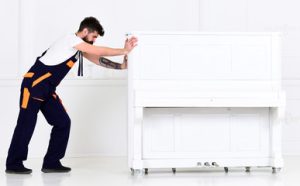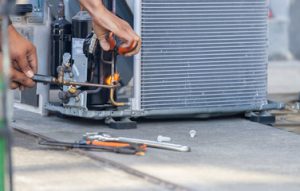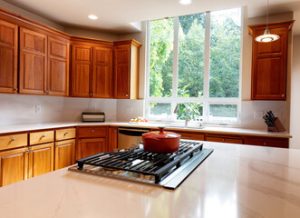Pianos are a large, delicate instrument that requires special care when moving. Whether it is an upright or grand piano, a professional piano mover can help you safely transport your instrument to its new home.

Performing a DIY move on your own can damage the piano and injure you or your family members. To avoid this, you should hire Piano Movers Denver that offers insurance options.
While most household items can be moved by an average person, there are certain things that should only be handled by professional movers. This includes things like pianos, which are extremely heavy and difficult to maneuver. Trying to move a piano yourself can lead to serious damage and even injury. If you are inexperienced, it is best to leave the job to the professionals so that you can avoid costly repairs.
One of the main reasons why it is important to hire a piano moving company is because they have the equipment necessary for the job. Pianos are extremely heavy and require a special dolly and straps to move them. You probably don’t have any of this equipment lying around your house, and it is very unlikely that you will be able to find it in the local hardware store. Piano movers have all of this equipment and know how to use it properly.
Another reason why it is important to hire a piano mover is because they have the experience needed to do the job correctly. Pianos are very delicate and can be easily damaged if they are dropped, bumped into walls or other furniture, or dragged across floors. Professional piano movers have years of experience under their belts and will be able to move your piano without causing any damage.
Pianos are incredibly difficult to maneuver and can be very dangerous to try to move yourself. In addition to being heavy, they are often shaped in ways that make them difficult to fit through doorways and up stairs. It is very easy to hurt yourself during a piano move by falling, throwing your back out, or even getting stabbed in the foot.
Hiring a professional piano mover is the best way to ensure that your piano is moved safely and quickly. Whether you need to transport your piano locally or to a new location, Oz Moving has the experience and expertise to handle it. We can help you transport any type of piano, from a small compact upright to a large concert grand. We can also disassemble the lid, legs, and pedals; pack and secure it; and reassemble your piano in your new home.
Equipment
Pianos are huge, incredibly heavy instruments that present unique physical and logistical challenges during transport. Their weight can range from a few hundred pounds to over half a ton, and their weight distribution is uneven, making them difficult to move safely without damage. This is why it is essential to hire professional movers who have the necessary equipment to safely move your piano.
Piano movers should have a variety of equipment to help them with this task, including dollies and moving straps. They should also know how to properly maneuver and transport the piano through tight spaces, such as hallways or stairwells. The movers should also have padding and blankets to protect the instrument from scratches or other damage. They should also be able to disassemble, wrap and crate the piano before transporting it.
Dollies are a must for piano moving, as they help movers move the instrument more easily by distributing its weight evenly. They can be rented from most local movers or purchased through specialty piano equipment stores. Moving straps are another must-have, as they help movers lift the piano on and off of the dolly and prevent it from slipping during transport.
Once the piano is on the dolly, it is secured with a locking strap and a second strap known as a “hump” strap. The movers then put the piano in the back of the truck and secure it to the sides. Depending on the type of piano, it may be secured with bolts or bars. In some cases, the movers will put a blanket over the piano to protect it from other items in the back of the truck.
While it is possible for amateur movers to move a piano, it’s best to leave the job to professionals. Pianos are expensive and delicate, and they can be damaged easily if not handled correctly. Besides, moving a piano requires extensive training and experience. Piano movers should have up-to-date licensing and insurance coverage to ensure the safety of their customers. They should also have a good understanding of different types of pianos.
Insurance
A professional piano mover will carry the necessary insurance coverage to protect you against unexpected damage or loss during the transport process. This will provide you with peace of mind knowing your precious instrument is in the hands of experts who care about the quality and safety of their work. Additionally, reputable piano movers will be transparent about their insurance policy offerings and cost, making it easier for you to make an informed decision about which coverage option is best for your needs.
When choosing a piano mover, ask about their experience and training in handling various types and sizes of pianos. A specialized mover will be familiar with the unique challenges that come with transporting this type of delicate and valuable instrument, giving you confidence in their ability to safely and securely relocate your piano. Additionally, a specialized mover will likely offer specialized coverage for pianos that is more comprehensive than standard homeowners policies.
Insurance Costs
When selecting a piano moving company, be sure to obtain detailed quotes that include all labor, transportation, equipment usage, and other costs. Compare pricing and coverage options to ensure you’re getting the most competitive rate. Also, be sure to verify the validity of the mover’s insurance policy by requesting a copy and reviewing it for coverage amounts, limitations, and exclusions.
The amount of insurance required for a piano move will depend on the type and value of the instrument as well as the policy’s coverage limits. For example, full replacement value coverage offers more comprehensive protection and tends to be more expensive than released value coverage. In addition, the distance your piano is traveling will impact your insurance costs, with longer distances often resulting in higher premiums.
Homeowners policies may provide additional riders for musical instruments, but these typically aren’t as specific to pianos as a separate piano policy and can leave you with gaps in your coverage. If your piano is a high-value instrument, consider securing a third-party insurance provider to cover the entire value of the instrument. This will help ensure your piano is fully protected during transit, no matter the cost.
Storage
Whether you’re moving a piano to or from storage, it’s important that the instrument is properly prepared. This is because pianos are incredibly delicate and require special care even when they’re not in use. It’s also essential to choose the right storage facility. Different options are available, and some are better for preserving the instrument’s quality than others.
When choosing a storage option, look for one that offers climate-controlled facilities. These provide a consistent environment, protecting your piano from extreme weather conditions and temperature changes. They’ll also keep humidity levels in check, preventing wood from swelling or shrinking and preserving the condition of the instrument.
In addition to climate-controlled facilities, you should also look for security measures when choosing a storage location. Look for a facility that has 24/7 security, including cameras and secure access control. Additionally, look for a facility that has pest control measures in place to protect your piano from insects and other rodents. You should also consider if the facility has a dedicated space for pianos, as this will ensure that your instrument is protected from other furniture and clutter.
When preparing your piano for storage, remove any detachable parts and store them separately. This will reduce stress on the piano during transportation and storage. Additionally, be sure to cover the piano with a breathable covering that will protect it from dust and other environmental damage. It’s also a good idea to tune your piano before storing it, as this will help maintain string tension and the structural integrity of the instrument.
Pianos are not only expensive musical instruments, but they’re also valued family heirlooms and works of art. Taking the proper precautions when transporting and storing your piano will ensure that it stays in pristine condition for years to come. With the help of a professional piano mover, you can rest assured that your prized possession is in good hands.

